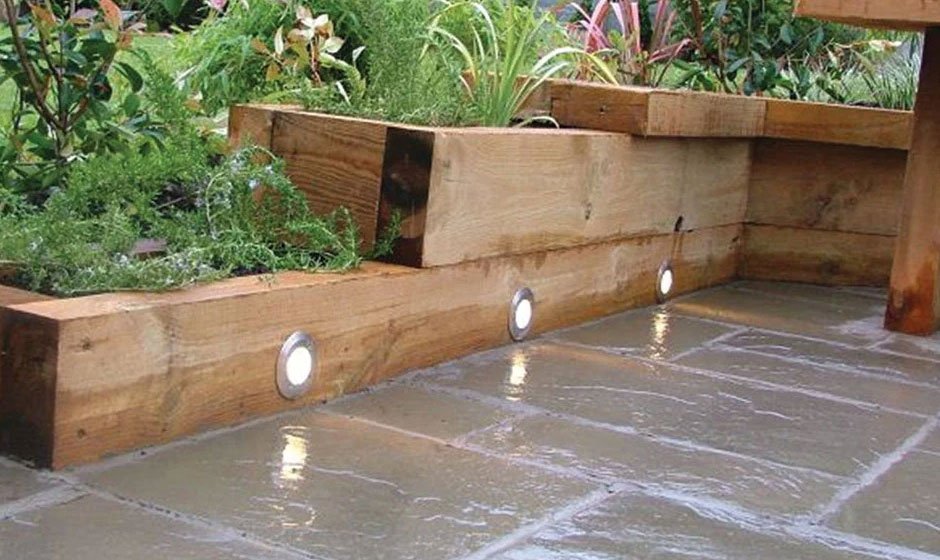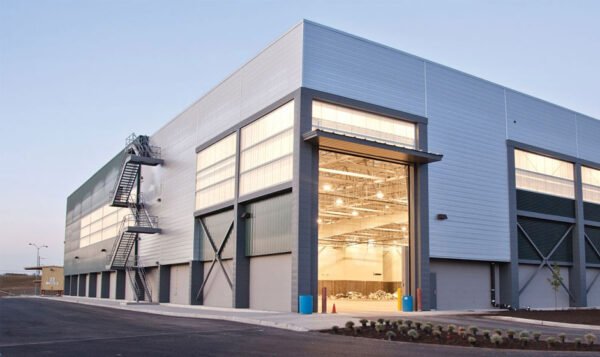What Are Timber Sleepers Used For? 5 Things To Know

Timber sleepers, also known as railroad ties or crossties, have a wide range of applications in various industries.
In landscaping, timber sleepers are commonly used to create retaining walls, raised garden beds, and borders for paths and driveways. With their natural rustic look and durability, they add a touch of charm to any outdoor space.
But it doesn’t stop there! Timber sleepers are also extensively used in construction projects. They provide sturdy support for structures such as bridges and decks. Their strength and resilience make them ideal for withstanding heavy loads and ensuring long-lasting stability.
In this article, we will explore the various uses of timber sleepers across different industries. From their role in the railway industry to their applications in landscaping and construction projects, we’ll delve into the advantages they offer in each sector.
So join us as we uncover the fascinating world of timber sleepers and discover why they continue to be a popular choice among professionals in diverse fields.
#1 Landscaping Applications of Timber Sleepers
Timber sleepers are commonly used for landscaping applications, such as creating retaining walls and raised flower beds. These sleepers are readily available pre-cut from suppliers such as the UK-based Harlow Bros, making them easily accessible for beginners and professionals alike.
Retaining walls made from timber sleepers provide both practical and aesthetic benefits. They help prevent soil erosion by holding back the earth, especially in sloped areas. Additionally, they add a touch of natural beauty to the landscape, blending in seamlessly with the surrounding environment.
Timber sleepers can also be used to construct raised flower beds, which offer several advantages. These elevated planters make gardening more accessible, reducing the need for bending or kneeling while tending to plants. They also serve as decorative elements that bring visual interest and dimension to outdoor spaces.
Moreover, timber sleepers can create steps or pathways in gardens or yards. By arranging them in a staggered pattern or stacking them on top of each other, you can easily build sturdy and durable stairs that blend harmoniously with the rest of your landscape design. These steps provide function and add character and charm to your outdoor space.
Timber sleepers have numerous landscaping applications that enhance functionality and aesthetics in outdoor environments. Whether building retaining walls to prevent soil erosion, constructing raised flower beds for easier gardening, or creating beautiful steps and pathways throughout your garden, timber sleepers offer a versatile solution that adds natural beauty to any landscape project.
#2 Construction Uses for Timber Sleepers
Build sturdy and durable structures with these wooden beams, perfect for supporting railway tracks or creating retaining walls. Timber sleepers have a wide range of construction uses due to their strength and versatility. Here are four popular applications:
- Railways: Timber sleepers are commonly used as a foundation for railway tracks. They provide stability and support for the rails, ensuring smooth and safe passage for trains. The natural properties of wood make it an ideal material for this purpose, as it can absorb vibrations and withstand heavy loads.
- Retaining Walls: These sleepers are also excellent for building retaining walls in construction projects. Whether you need to create a terraced garden or prevent soil erosion on slopes, timber sleepers offer a practical solution. They can be easily stacked and secured together to form a strong barrier that holds back earth or water.
- Bridge Construction: Another important application of timber sleepers is in bridge construction. The beams can be used as supports or decking materials in various bridges, such as footbridges or small vehicle bridges. Wood provides structural strength and adds aesthetic appeal to the overall design.
- Foundation Systems: Timber sleepers can be part of foundation systems in residential or commercial buildings. Using them as base plates or piers, you can create a solid and reliable foundation structure that evenly distributes the weight across the ground.
With these versatile uses, timber sleepers play an essential role in various construction projects, providing strength, durability, and functionality while adding a touch of natural beauty to the built environment.
#3 Benefits of Timber Sleepers in the Railway Industry
Timber sleepers, also known as railroad ties, play a crucial role in ensuring the safety and efficiency of train tracks worldwide. One of the main benefits of timber sleepers is their ability to absorb vibrations caused by passing trains.
This not only reduces noise levels for passengers but also minimises wear and tear on the tracks themselves. By absorbing vibrations, timber sleepers help to prevent track deterioration and increase the lifespan of railway infrastructure.
Another advantage of timber sleepers in the railway industry is their flexibility. Unlike concrete or steel alternatives, wood has natural damping properties that allow it to adapt to changes in temperature and humidity.
This means that timber sleepers can expand and contract without causing significant damage to the tracks or compromising their stability. Additionally, wood is a renewable resource that can be sustainably harvested, making timber sleepers an environmentally friendly choice for railway construction.
Timber sleepers offer numerous benefits in the railway industry. From enhancing passenger comfort by absorbing vibrations to providing flexibility and sustainability, these wooden beams are essential to maintaining safe and reliable train tracks worldwide.
#4 Other Industries Utilising Timber Sleepers
Did you know that various industries, such as landscaping and construction, have found innovative ways to incorporate these versatile wooden beams into their projects?
Timber sleepers are not just limited to the railway industry; they’ve also proven to be highly useful in other sectors.
In landscaping, timber sleepers are commonly used for creating garden borders, retaining walls, and raised beds.
Their durability and natural aesthetic make them popular for adding structure and character to outdoor spaces. Their ability to withstand weathering and pressure ensures longevity, even in harsh conditions.
In the construction industry, timber sleepers find applications in numerous areas. They can be utilised as an alternative to traditional concrete or steel beams when constructing bridges or decks.
The versatility of timber allows it to be easily shaped and customised according to specific project requirements. Moreover, timber sleepers can also be used for foundation support in building structures or as a base material for flooring systems. This provides stability and adds a touch of warmth and natural beauty to the overall design.
With their wide range of uses across different industries, timber sleepers continue proving themselves as valuable resources for enhancing functionality and aesthetics in various projects.
#5 Advantages of Using Timber Sleepers in Various Sectors
One of the great benefits of incorporating timber sleepers into different industries is their versatility and ability to add a touch of natural beauty while providing stability and durability. Timber sleepers have numerous advantages, making them an ideal choice for various sectors
Here are four reasons why timber sleepers are widely used in different industries:
- Environmental friendliness: Timber sleepers are made from renewable resources, making them an eco-friendly option. Businesses can contribute to sustainable practices and reduce their carbon footprint by choosing timber sleepers.
- Cost-effectiveness: Timber sleepers are relatively affordable compared to other materials like concrete or steel. They offer a cost-effective solution without compromising quality, making them suitable for businesses looking for economical options.
- Versatility: Timber sleepers can be used in multiple applications across different sectors, including landscaping, construction, agriculture, and transportation. Their adaptability allows businesses to utilise them in various ways according to their specific needs.
- Aesthetic appeal: Timber sleepers have a natural beauty that adds warmth and character to any environment they are incorporated into. Whether creating garden pathways or constructing retaining walls, timber sleepers enhance the visual appeal of the surroundings while providing practical benefits.
Timber sleepers offer several advantages that make them highly sought after in different industries. Their environmental friendliness, cost-effectiveness, versatility, and aesthetic appeal make them popular among businesses seeking durable and visually appealing solutions for their projects.
Overall, timber sleepers offer many benefits, making them a top choice for businesses across different industries.
In Conclusion,
In conclusion, timber sleepers are incredibly versatile and have various applications in various industries.
Their strength and durability make them suitable for a variety of applications across different sectors. Furthermore, their natural aesthetic appeal adds beauty to any project they’re incorporated into.
Whether it’s landscaping, construction, railways, or other industries – timber sleepers prove time and time again that they’re an excellent choice for both practicality and aesthetics.



